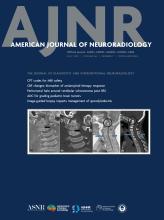Case of the Week
Section Editors: Matylda Machnowska1 and Anvita Pauranik2
1University of Toronto, Toronto, Ontario, Canada
2BC Children's Hospital, University of British Columbia, Vancouver, British Columbia, Canada
Sign up to receive an email alert when a new Case of the Week is posted.
October 1, 2020
Febrile Illness–Related Status Epilepticus (FIRES)
- Background:
- Febrile illness–related status epilepticus (FIRES) is a subcategory of new-onset refractory status epilepticus (NORSE).
- The “claustrum sign” is a recently described imaging feature associated with FIRES and NORSE.
- NORSE is a rare but challenging condition characterized by the occurrence of a prolonged period of refractory seizures, requiring emergent medical attention.
- Typically occurs without an identified cause and does not respond to conventional treatments
- Recent studies suggest autoimmune, paraneoplastic, or infectious etiologies.
- Clinical Presentation:
- Prodromal symptoms are common, while many cases of NORSE have been reported with no prodromal symptoms. Symptoms include fever, confusion, fatigue, headache, signs of gastrointestinal or upper respiratory tract infection, and behavioral changes.
- Very aggressive form of status epilepticus with focal motor seizures and myoclonus, often requiring ICU admission and anesthetics
- About 20–30% of people with NORSE do not survive the prolonged status epilepticus (acute phase) due to coma, prolonged seizures, and the need for ventilator-assisted breathing.
- A high proportion (about 80%) of patients develop chronic epilepsy and are at risk for mental disabilities.
- Key Diagnostic Features:
-
During the acute phase, bilateral claustrum T2-FLAIR signal hyperintensity has been described.
-
In the chronic phase, the claustral signal abnormality typically resolves, with either normal parenchymal volume or atrophy.
-
Abnormal CSF, with pleocytosis and/or elevated protein levels, is found in 73% of cases.
-
In a study of 130 cases of NORSE, unilateral (46%) seizure onset was more common than bilateral independent (24%), generalized (15%), and multifocal (8%) onsets. Periodic or epileptiform discharges were observed in 72% of cases and were more frequently lateralized (39%).
-
- Differential Diagnoses:
- Subinsular infarct: Expect restricted diffusion, not usually symmetric
- Sequalae of small vessel ischemic disease (leukoaraiosis): Unusual appearance and not expected in a 22-year-old
- Postictal bilateral external capsule T2 hyperintensity: Would be in the region of external capsule and not claustrum; also extremely rare
- Toxic-metabolic or drug-related etiologies: No relevant history in this case
- Cerebral autosomal dominant arteriopathy with subcortical infarcts and leukoencephalopathy (CADASIL): Usually more extensive MRI abnormalities with evidence of infarct and unusual to present with status epilepticus
- Unusual presentation of osmotic demyelination: No evidence for electrolyte abnormality in this case
- Treatment:
-
Antiepileptic medications and anesthetics are less effective than in other types of status epilepticus.
-
Immunotherapy, high-dose intravenous steroids, intravenous immune globulins, and plasma exchange have been used with some success in prior cases.
-











